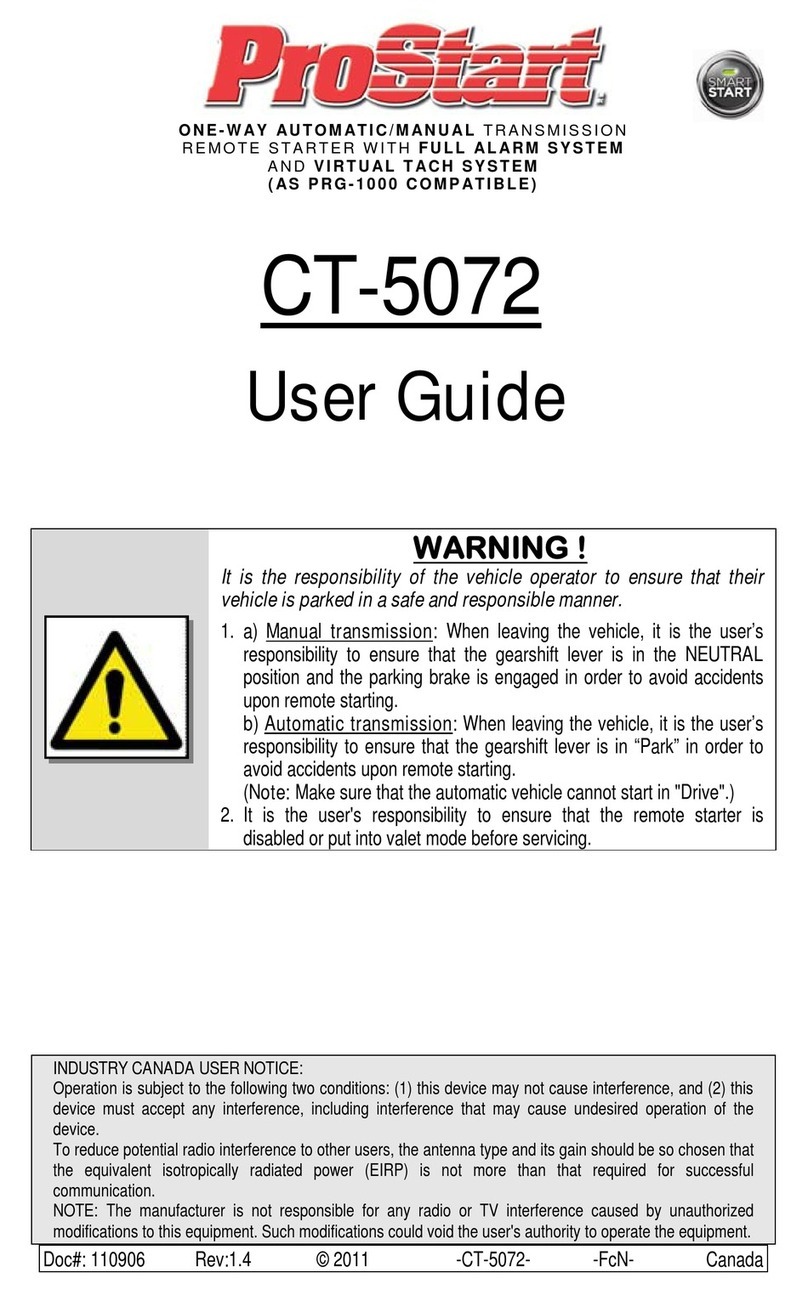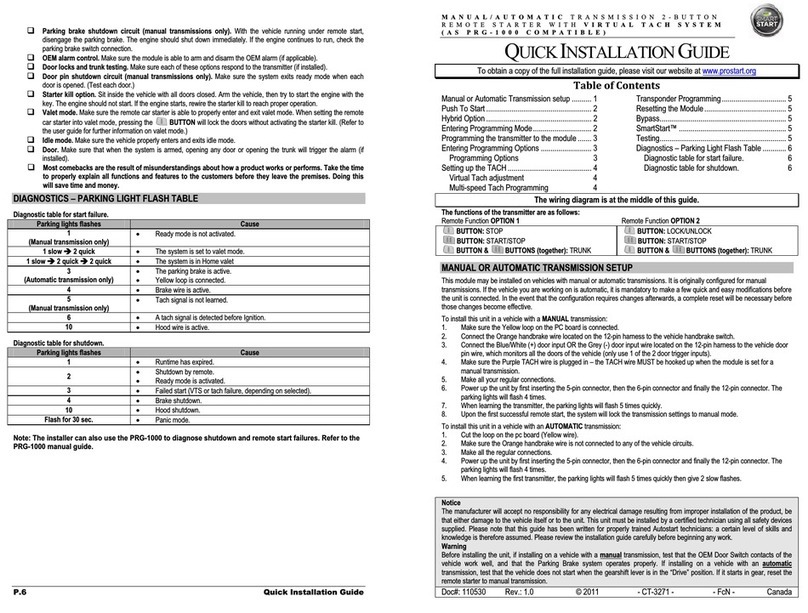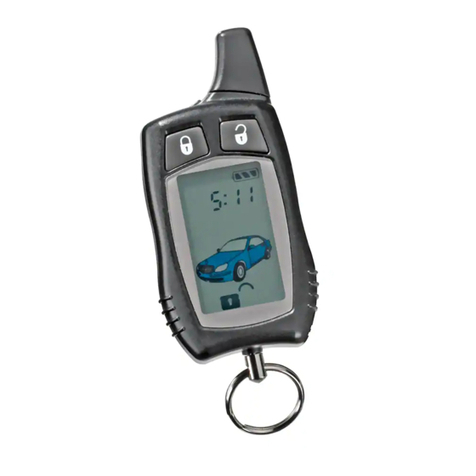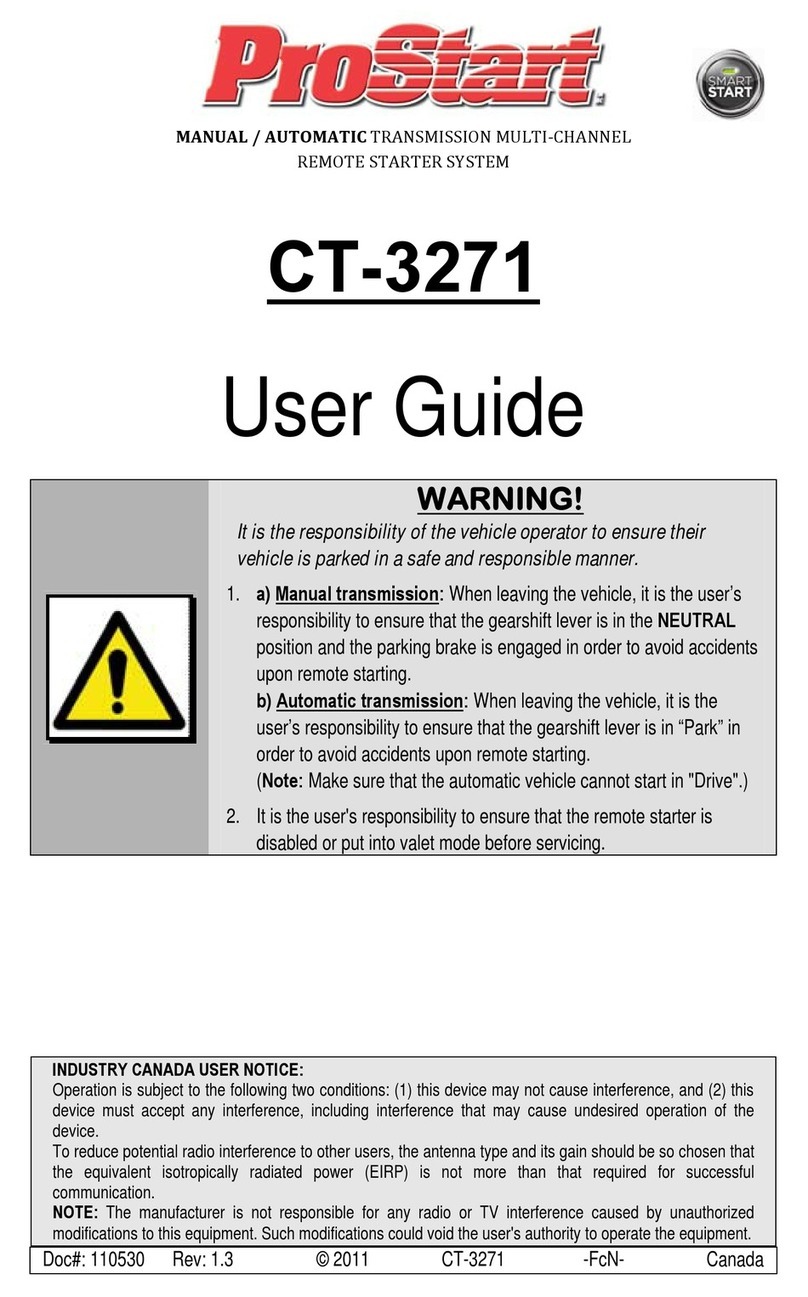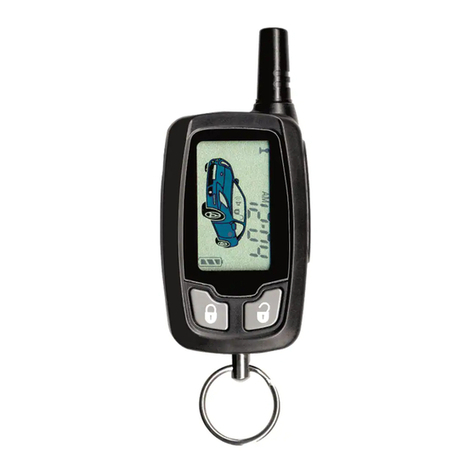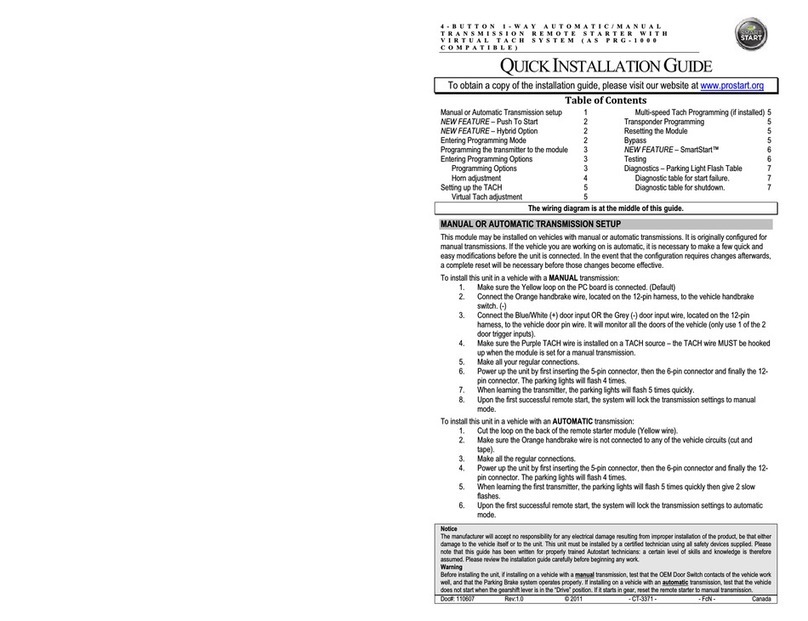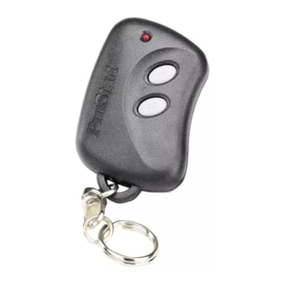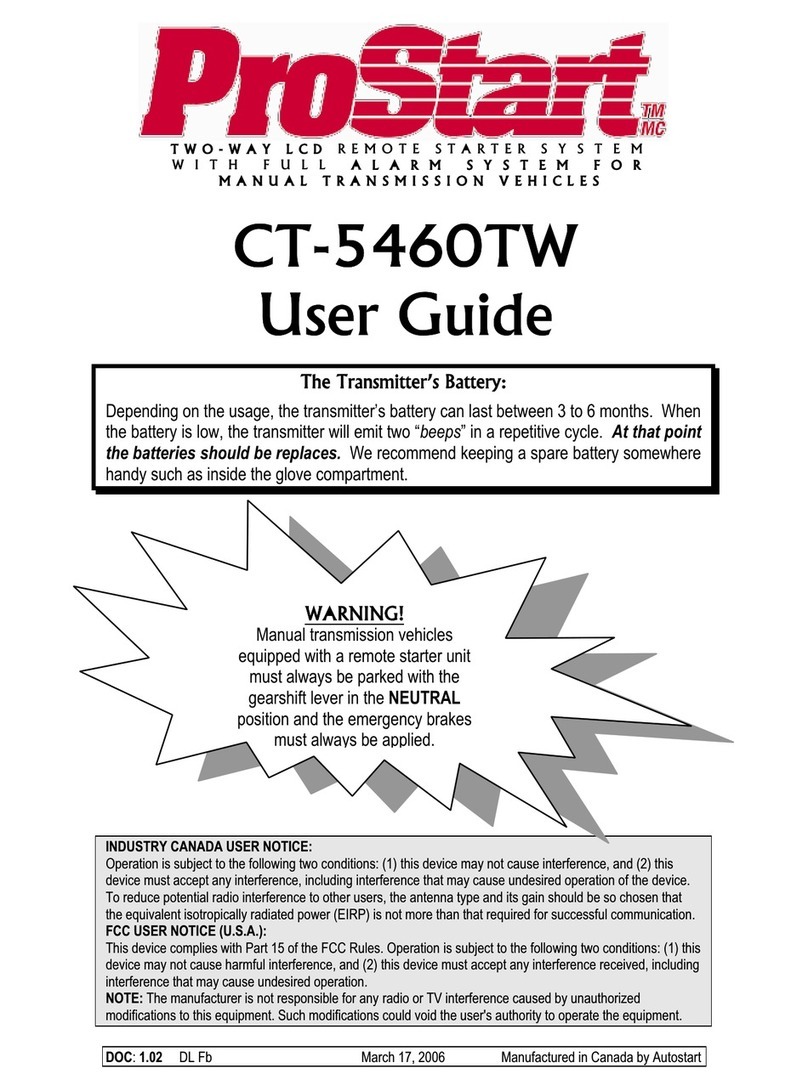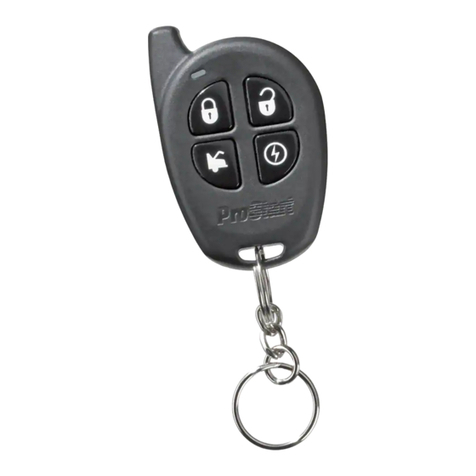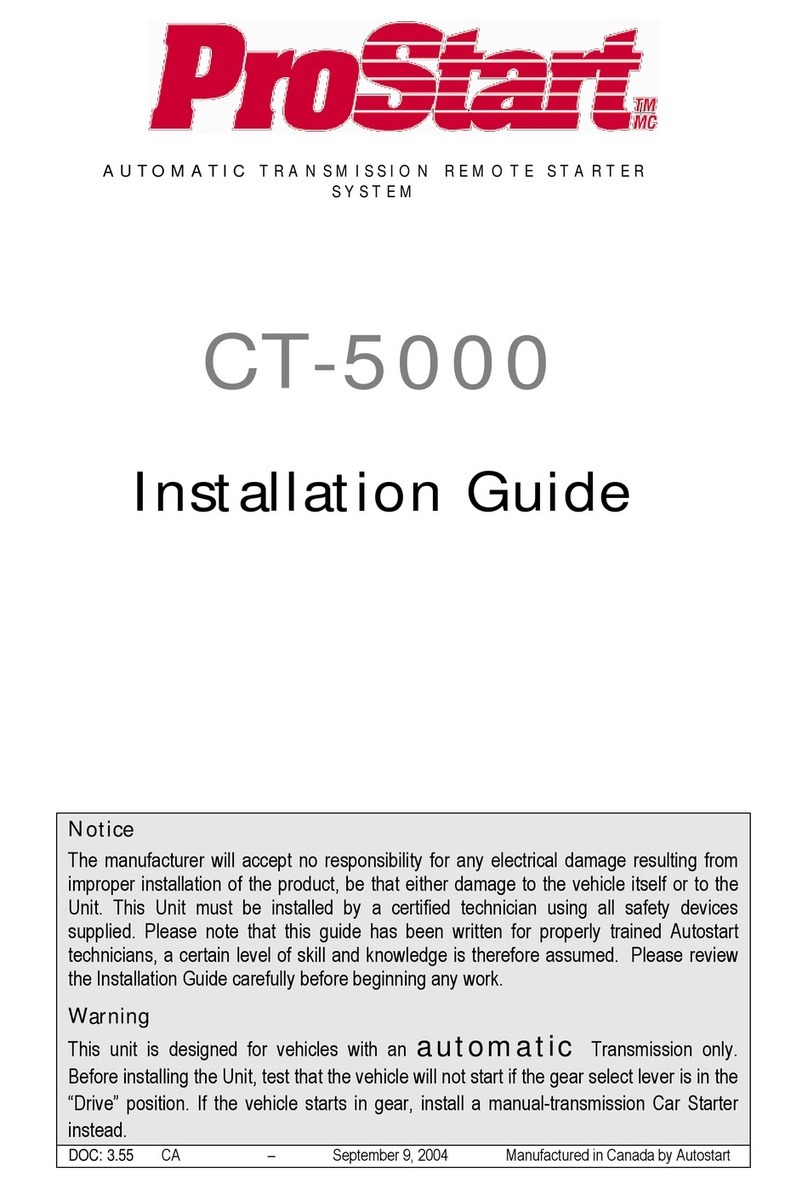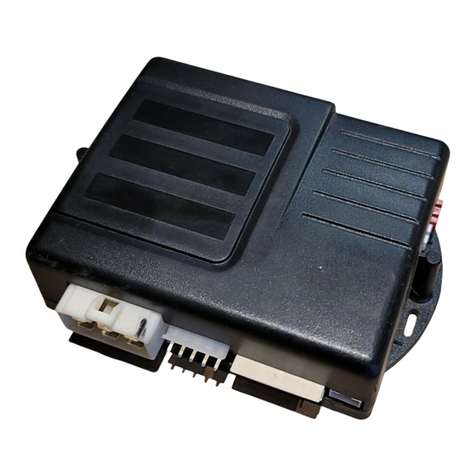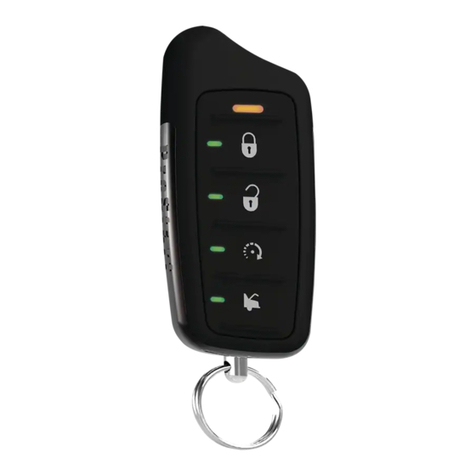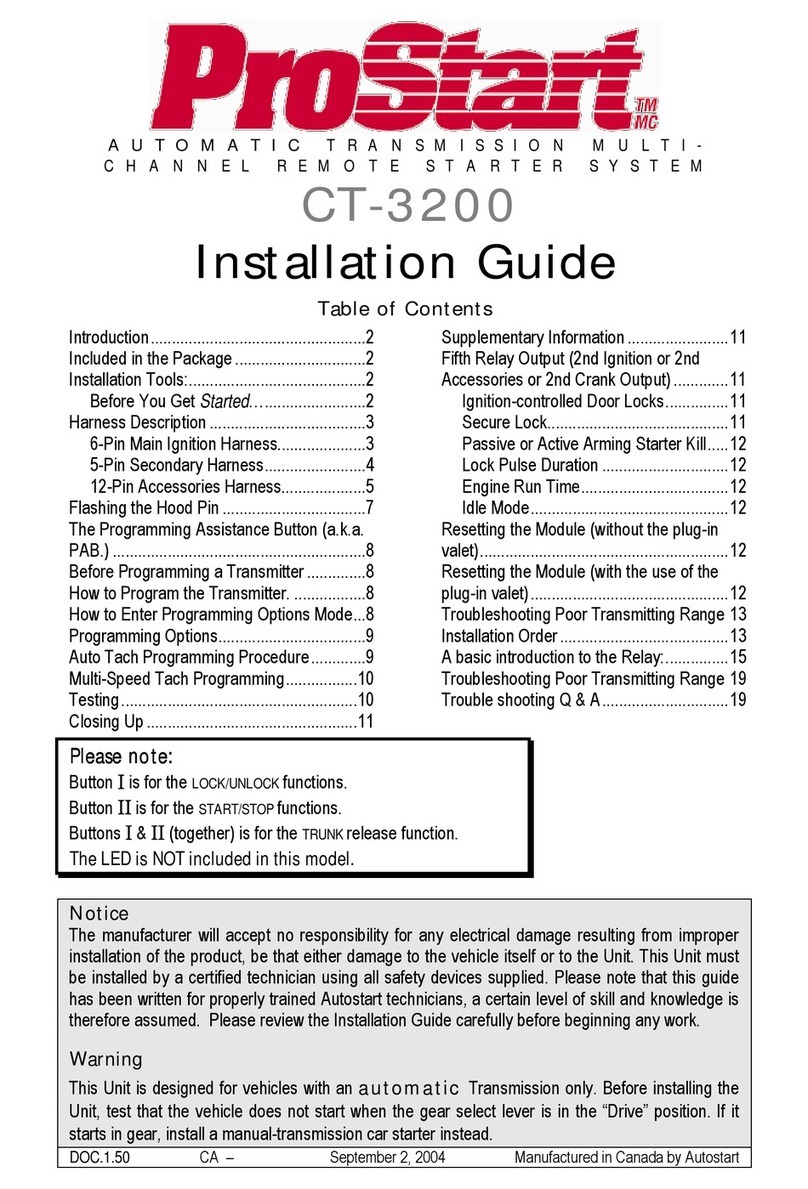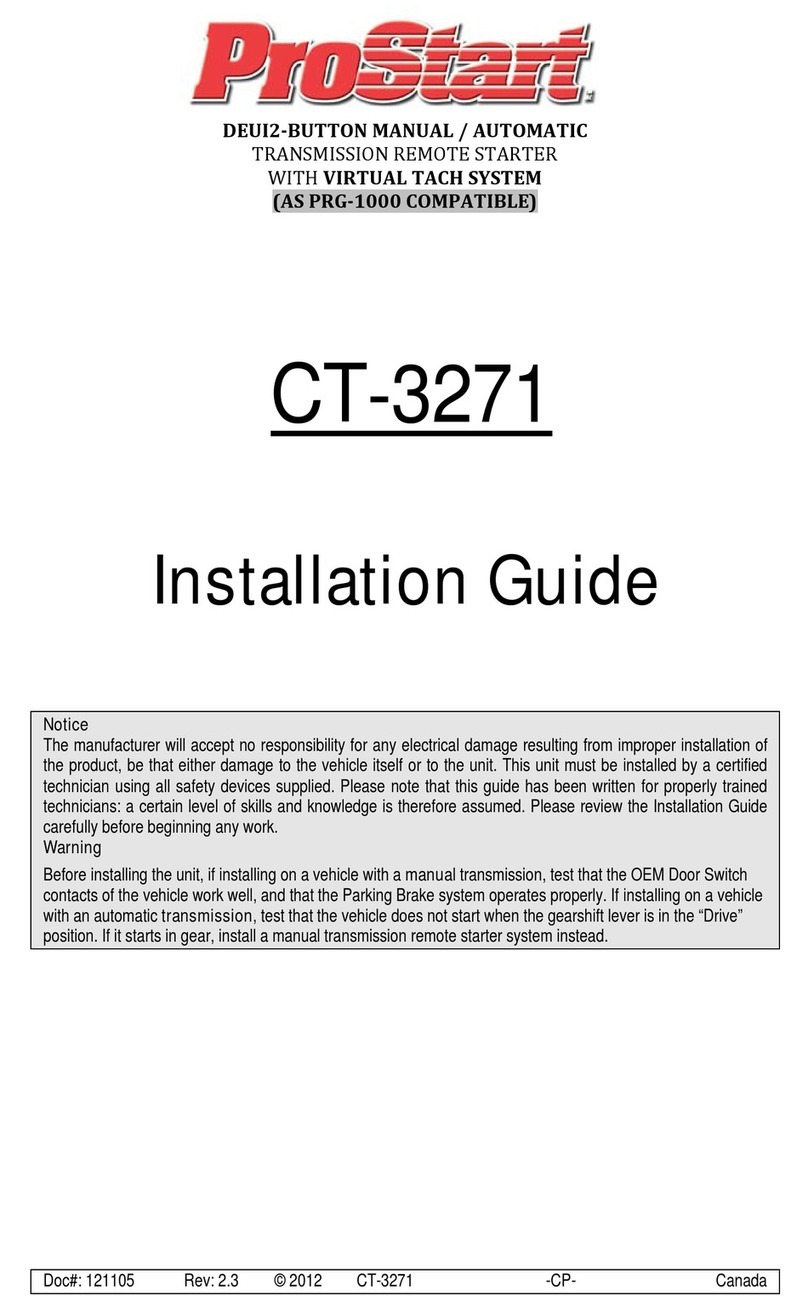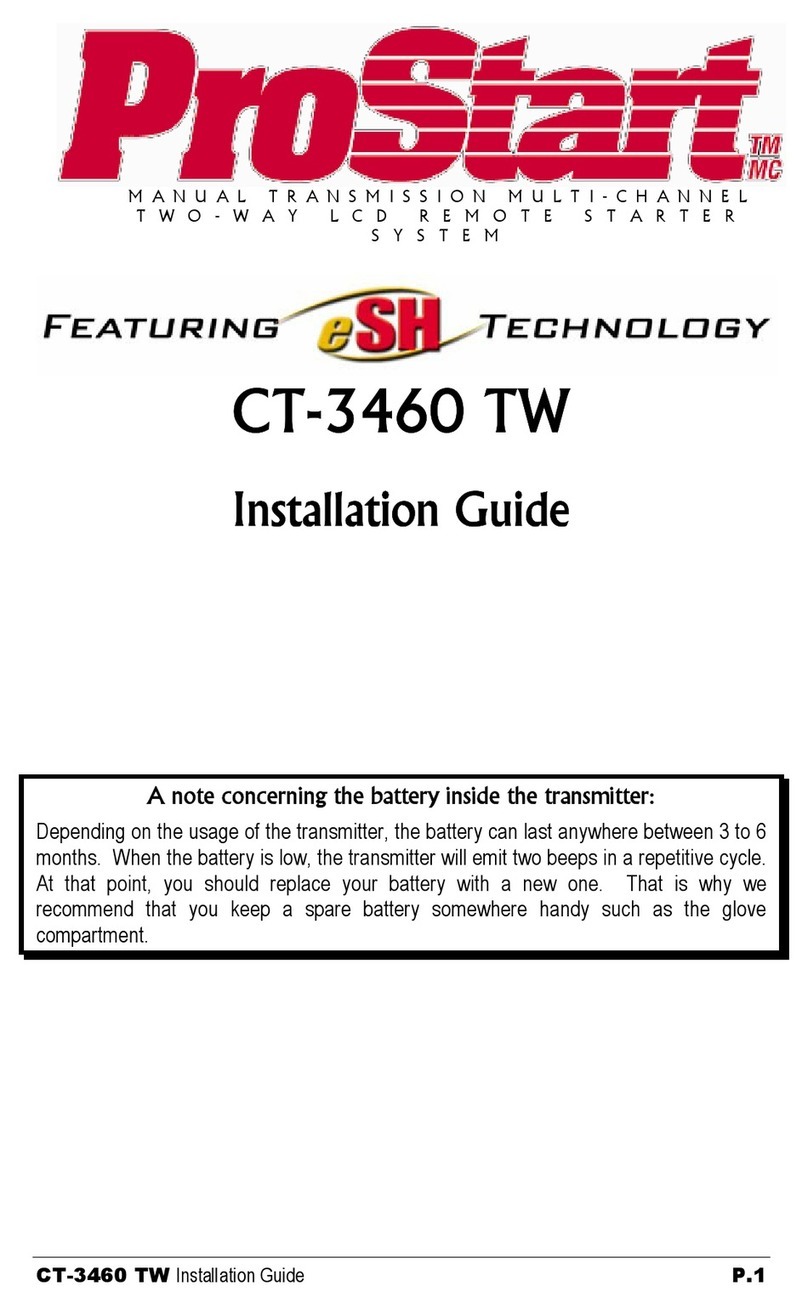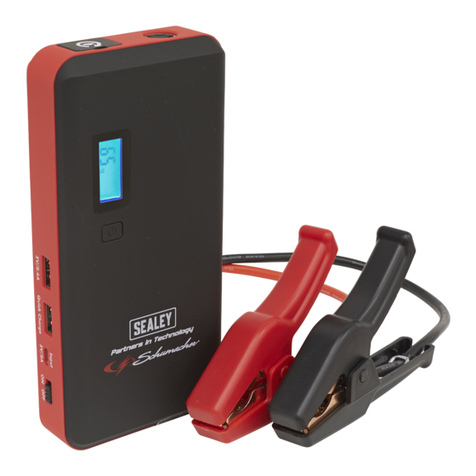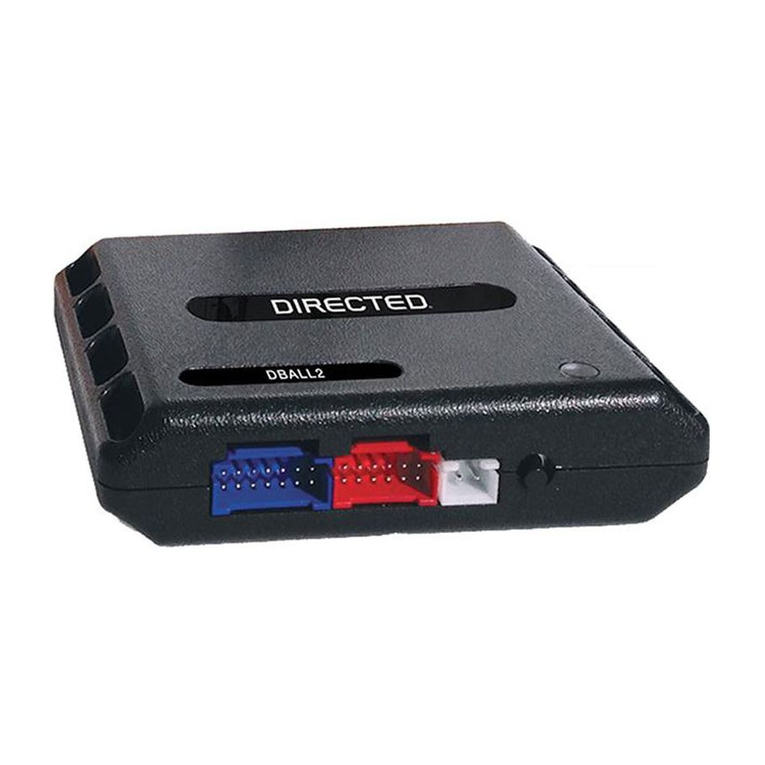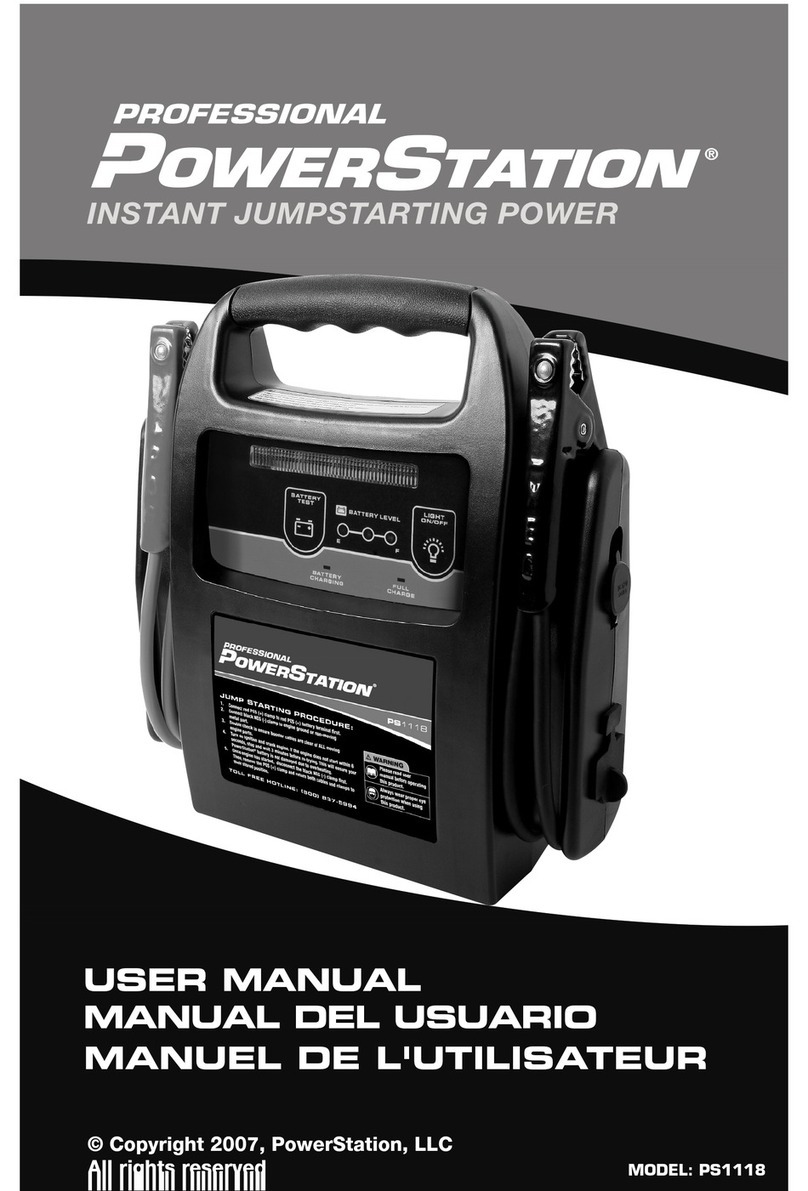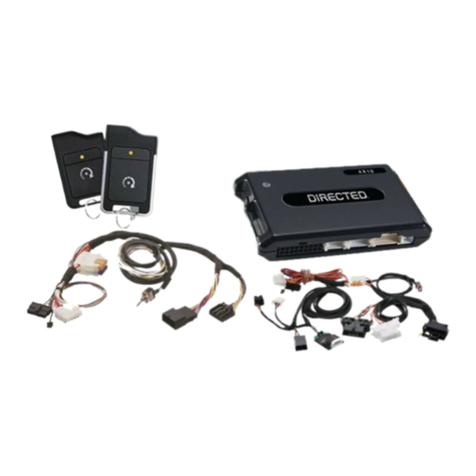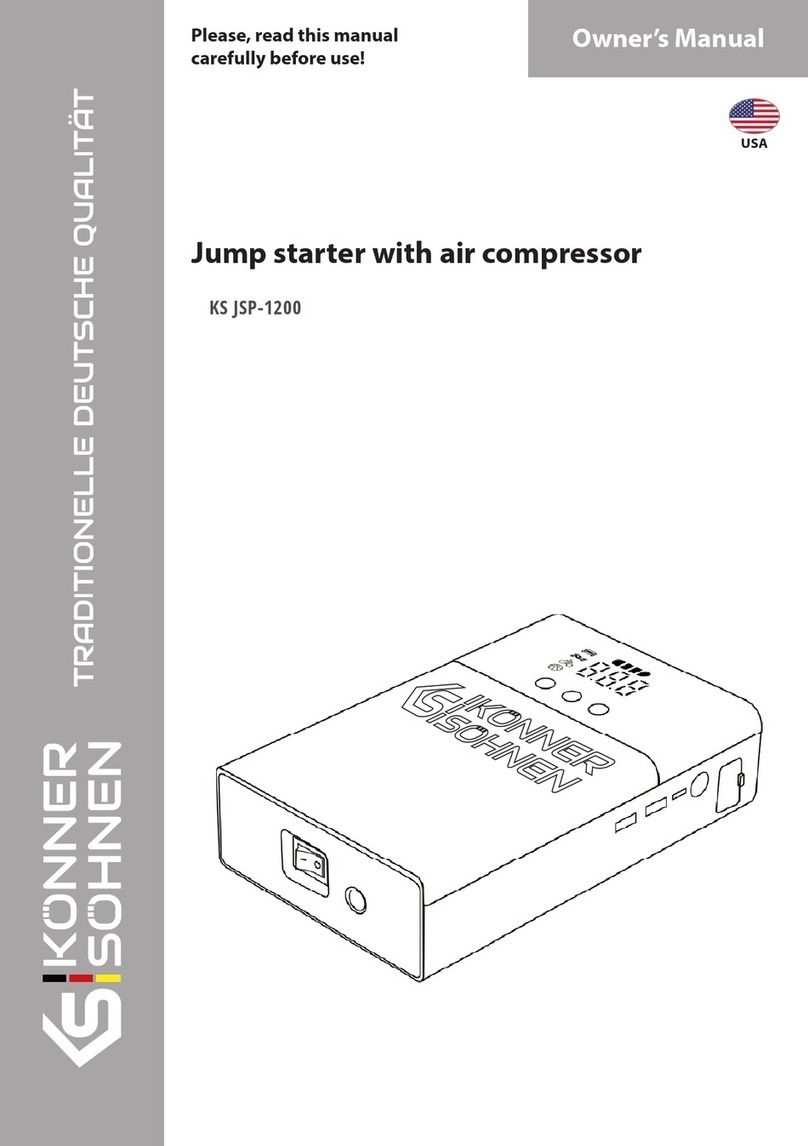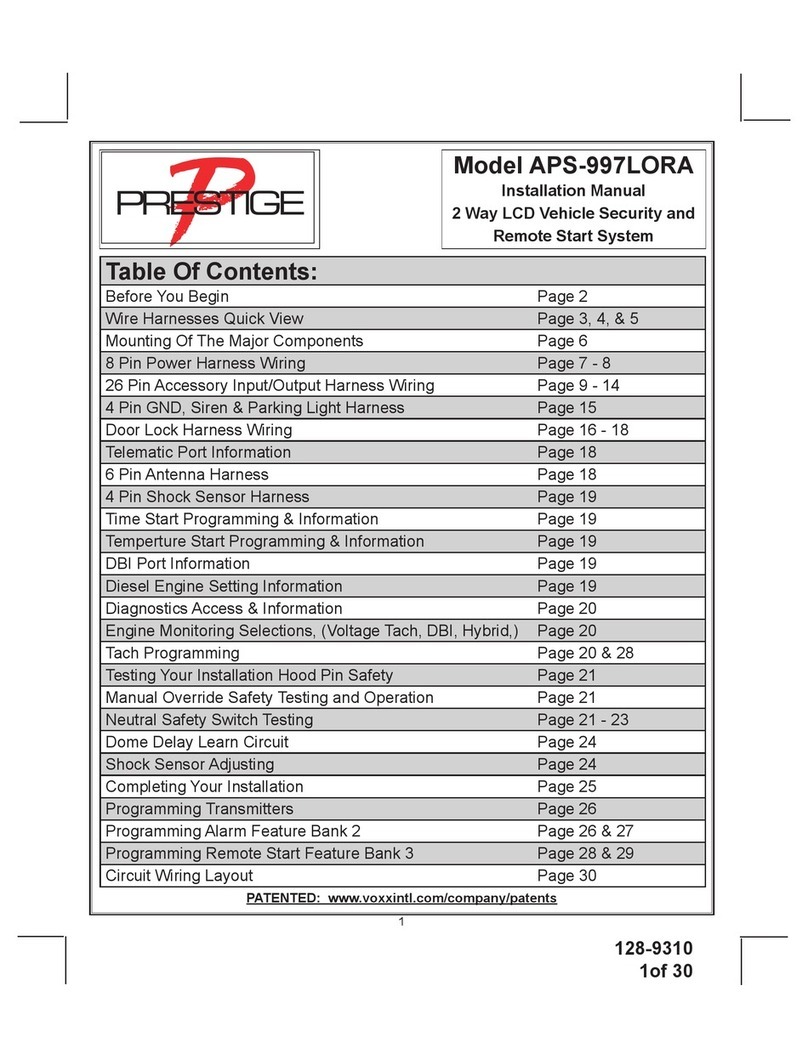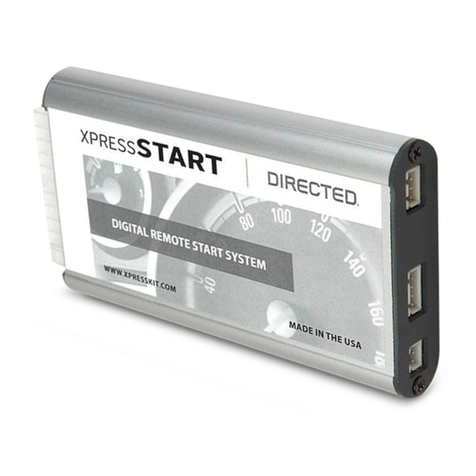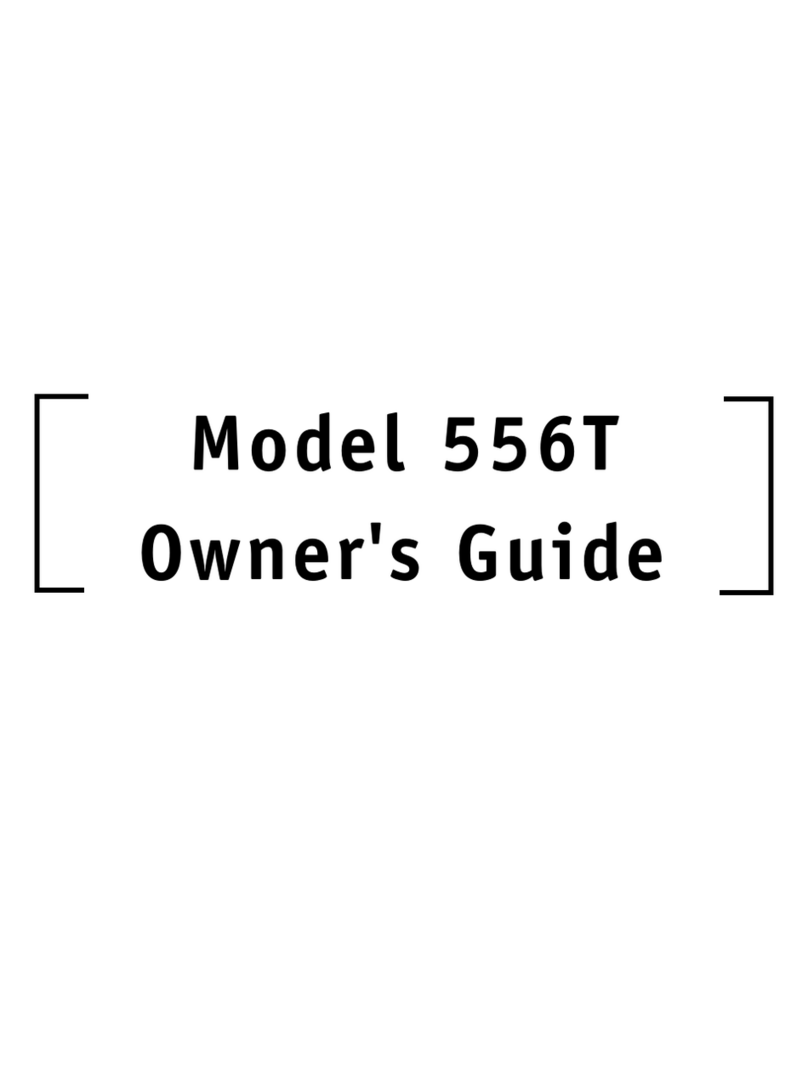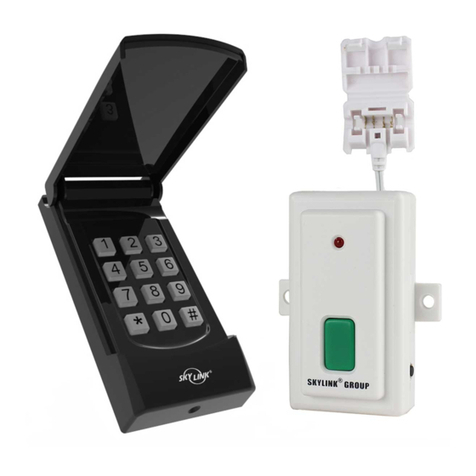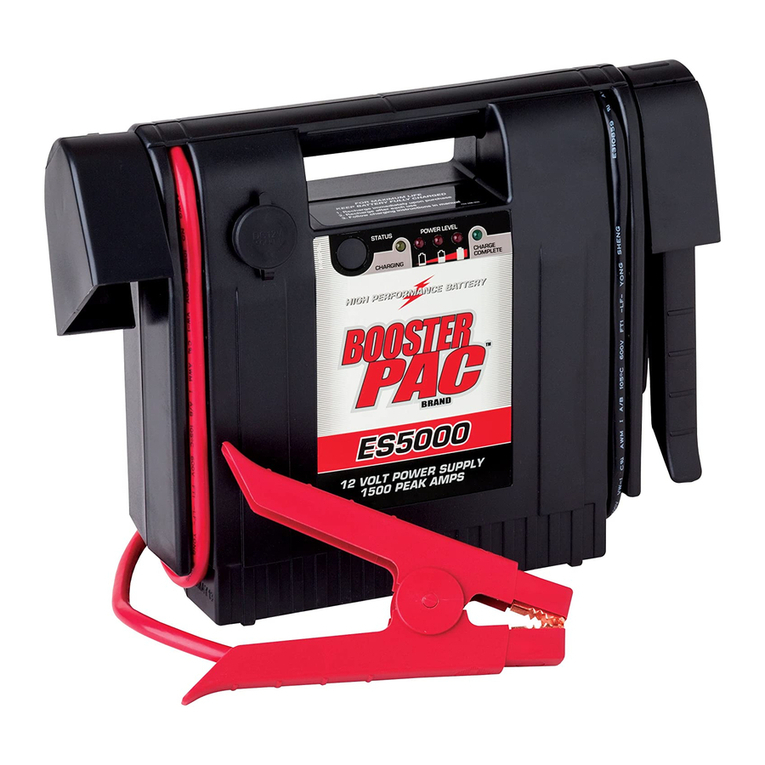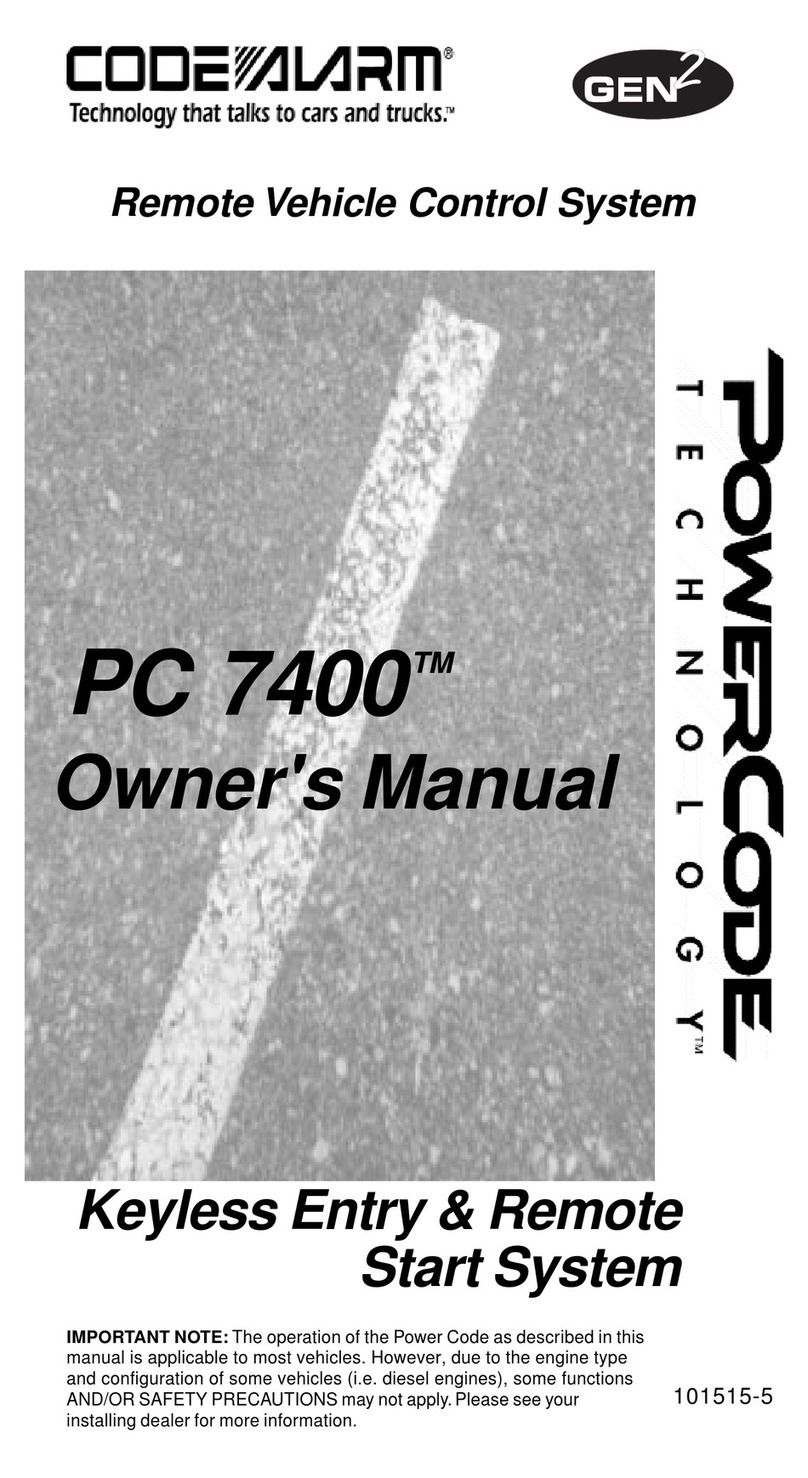
CT-5000 Installation Guide P. 3
+PUVCNNCVKQP2QKPVU6Q4GOGODGT
• Make sure that vehicles equipped with an automatic transmission do not
start while in any of the drive gears. If the vehicle starts in gear, install
a manual-transmission remote starter instead.
• Keep the antenna away from other types of antennas (GPS/Onstar).
• When working on a vehicle, always leave a window open.
•Never leave the keys in the car. Leave them on a workbench with a
window rolled down.
• If possible, remove courtesy light fuse to prevent battery drain.
• Inspect vehicle for any body damage or electrical problems.
• When probing/testing wires in a harness, one should check where the
wire harness terminates into the connector plugs.
• Sometimes airbag wires will not be labelled (i.e. yellow split loom/tape) in
the harness itself. They will always be labelled at the connector plugs
where they terminate.
• Never install the control unit where it could interfere with normal operation
or obstruct service technicians.
• Always solder and tape all connections.
• Always use a grommet when running wires into the engine compartment.
Never run wires through bare or sharp metal.
• Do not disconnect the battery on vehicles equipped with air bags and anti-
theft radios.
• Never ground the control unit to the vehicle’s steering column.
• Make sure that all the switches and controls operate properly.
• Verify that the vehicle starts and idles properly.
• Make sure that all safety equipment is installed: the valet button, the hood
switch and the warning label.
%6#NCTO5VCTVGT(GCVWTGU.KUV
120 dB 6-tone siren
4-button multi-channel remote transmitter
Long-range super-heterodyne receiver technology ***
Operating range: up to 450 m / 1500 ft ***
Anti-theft starter kill output
Doors monitored against vehicle access
5-zone protection with zone bypass: In order to keep protection to best, the
shock sensor will disable protection from a zone if it is selected for
bypass or found defective. Upon such a bypass the module will give an
audible warning.
Automatic zone-3 disarm/rearm by trunk switch: When the user releases
the trunk while the module is armed, the alarm will be temporarily
disarmed until the trunk is closed back again.
Trunk switch input: Rearms factory alarms when the trunk is closed.
Open zone notification: An audible signal will warn users if a door was left
open.
Disarmed notification: An audible signal will warn users if the vehicle was
left unlocked.
L.E.D. notification of zone intrusion: Upon disarming of the vehicle, the
L.E.D. will notify the user if an intrusion was detected while the module
was armed.
Intelligent factory alarm control: The module can arm virtually any factory
alarm.
Two-stage disarming: When the vehicle is in an alarm condition, pressing
the unlock button will shut off the siren without disarming the module;
pressing the unlock button a second time will disarm the module.
Programmable passive- or active-arming alarm: In Passive Mode, the alarm
will arm automatically without requiring the intervention of the user.
Programmable passive- or active-arming starter kill output: In Passive
Mode, this anti-theft device will arm automatically without requiring the
intervention of the user. **
Panic Mode: This safety feature allows the user to quickly trigger the alarm
in emergency situations.
Quick Lockout™: Also called Secure Panic: the system will lock all doors
when brake pedal is pressed while the siren is sounding in Panic Mode
Safe start: This is a programmable dual-step feature for children safety.
When this function is enabled, remote-starting the vehicle becomes a
two-step operation.
Swap start: When enabled, this extended safety mode requires the user to
press two different buttons in order to remote-start the vehicle.
Smart rearm: The module will only rearm once.
Siren Mute: If the alarm runs off (or when the module has entered Panic
Mode), the user may shut off the alarm without disarming the vehicle.
Secure Lock and Arm with smart operation: This feature allows the module
to control certain OEM factory alarm systems which would otherwise
remain disarmed upon a remote start: with Secure Lock on, the vehicle
will be locked and armed after a remote start. Furthermore, with Smart
Secure Lock, relocking will only occur if the vehicle was locked at the
moment of the remote start-up.
Last armed state memory: If the module is powered off while armed, when
it is powered up again it will reset with its armed status, and there will be
an alarm condition.
Starter anti-grind feature: Upon entry in a vehicle already running following
a remote start, drivers have a tendency to turn the ignition key to the
crank position by mere force of habit. This would cause the starter motor
to re-engage and "grind" the starter gears. When installed, the anti-grind
option will prevent damages to the starter if this takes place.
Chirp delete: Allows to avoid siren confirmation when locking / unlocking.
Driver's door priority access: Allows to open solely the driver’s door.
Remote start confirmation: Once the vehicle has been remote-started, a
chirp will be returned every time the start button is pressed again, in order
to indicate that the engine is already running.
Car finder: Users can remotely activate an audible signal assisting them to
find the vehicle more easily.
Idle Mode: Allows to leave the vehicle protected with the engine running.
Plug-in electronic ultra-secure valet button
Plug-in full-status dash-mounted L.E.D.
Multi-car operation: A single remote control can operate two separate
vehicles equipped with identical remote starter models
Remote valet operation: This feature allows to set the vehicle to Valet
Mode using the remote control.
User-controlled Cold Weather Mode: The module will start the engine at
regular intervals within a period of 24 h.
Programmable chirp duration (from 5 to 200 ms)
Programmable horn or siren output for horn or factory siren control
Controllable latched 30-sec. negative output (on/off toggle
Event logging / start-up failures: The module can report error codes
specifying the status of the last four start-up failures
Event logging / intrusions: The module returns error codes specifying the
status of the last intrusion detected




















